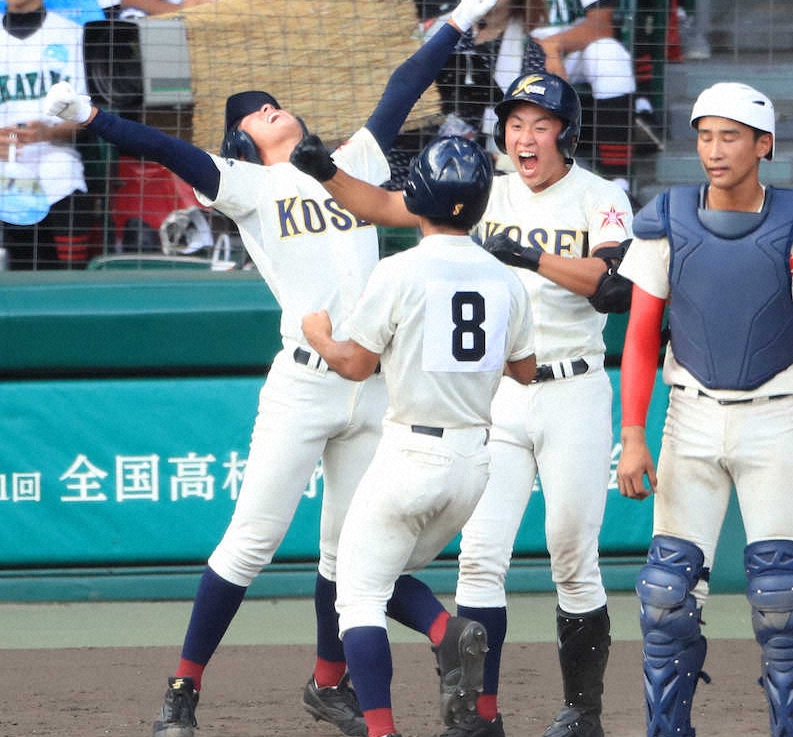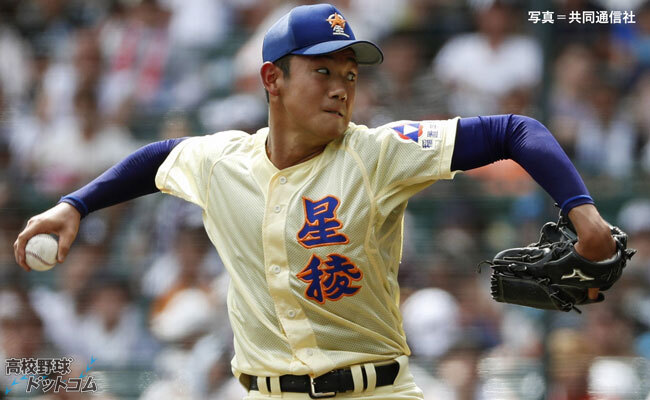So one may wonder, do tiers matter in terms of winning Koushien? I’ve taken the tier list and started moving teams off the lists as they are eliminated. Upcoming teams at risk in red.
Champion
- Tier 1 – Saitama – Hanasaki Tokuharu (5th apperance, 3rd consecutive)
Runner-up
- Tier 1 – Hiroshima – Kouryou (22nd appearance, 1st in 3 years)
Semi-finalists
- Tier 1
- Nara – Tenri (28th appearance, 1st in 2 years)
- Tier 3
- Nishi Tokyo – Toukaidai Sugao (3rd appearance, 1st in 17 years)
Quarterfinal Elimination
- Tier 1
- Iwate – Moriokadai Fuzoku (10th appearance, 2nd consecutive)
- Miyagi – Sendai Ikuei (26th appearance, 1st in 2 years)
- Tier 2
- Oita – Meihou (6th appearance, 1st in 2 years)
- Tier 3
- Kagawa – Sanbonmatsu (3rd appearance, 1st in 24 years)
3rd Round Elimination
- Tier 1
- Fukushima – Seikou Gakuin (14th appearance, 11th consecutive)
- Osaka – Osaka Touin (9th appearance, 1st in 3 years)
- Tier 2
- Gunma – Maebashi Ikuei (3rd appearance, 2nd consecutive)
- Higashi Tokyo – Nishogakushadai Fuzoku (2nd appearance, 1st in 3 years)
- Hyogo – Kobe Kokusaidai Fuzoku (2nd appearance, 1st in 3 years)
- Ehime – Saibi (5th appearance, 1st in 4 years)
- Kagoshima – Kamimura Gakuen (4th appearance, 1st in 5 years)
- Tier 3
- Aomori – Aomori Yamada (11th appearance, 1st in 8 years)
1st/2nd Round Elimination (both rounds grouped in since some start in 2nd Round)
- Tier 1
- Minami Hokkaido – Hokkai (38th appearance, 3rd consecutive)
- Tochigi – Sakushin Gakuin (13th appearance, 7th consecutive)
- Chiba – Kisaradzu Sougou (6th appearance, 2nd consecutive)
- Kanagawa – Yokohama (17th appearance, 2nd consecutive)
- Yamanashi – Yamanashi Gakuin (7th appearance, 2nd consecutive)
- Niigata – Nihon Bunri (9th appearance, 1st in 3 years)
- Wakayama – Chiben Wakayama (23rd, 1st in 2 years)
- Kochi – Meitoku Gijyuku (19th appearance, 8th consecutive)
- Tier 2
- Higashi Tokyo – Nishogakushadai Fuzoku (2nd appearance, 1st in 3 years)
- Aichi – Chuukyoudai Chuukyou (28th appearance, 1st in 2 years)
- Toyama – Takaoka Shougyou (18th appearance, 1st in 2 years)
- Gifu – Oogaki Nichidai (4th appearance, 1st in 3 years)
- Hyogo – Kobe Kokusaidai Fuzoku (2nd appearance, 1st in 3 years)
- Shimane – Kaisei (10th appearance, 1st in 3 years)
- Kumamoto – Shuugakukan (3rd appearance, 2nd consecutive)
- Kagoshima – Kamimura Gakuen (4th appearance, 1st in 5 years)
- Okinawa – Kounan (11th appearance, 1st in 2 years)
- Tier 3
- Kita Hokkaido – Takikawa Nishi (3rd appearance, 1st in 19 years)
- Aomori – Aomori Yamada (11th appearance, 1st in 8 years)
- Akita – Meiou (9th appearance, 1st in 8 years)
- Yamagata – Nichidai Yamagata (17th appearance, 1st in 4 years)
- Ibaraki – Tsuchira Nichidai (3rd appearance, 1st in 31 years)
- Nagano – Matsushou Gakuen (36th appearance, 1st in 9 years)
- Ishikawa – Nihon Koukuu Ishikawa (2nd appearance, 1st in 8 years)
- Fukui – Sakai (1st appearance), merger in 2016 of…
- Harue Kougyou (no appearances)
- Sakai Nougyou (no appearances)
- Shizuoka – Fujieda Meisei (1st appearance)
- Mie – Tsuda Gakuen (1st appearance)
- Shiga – Hikone Higashi (2nd appearance, 1st in 4 years)
- Kyoto – Kyoto Seishou (3rd appearance, 1st in 19 years)
- Tottori – Yonago Shouin (3rd appearance, 1st in 17 years)
- Okayama – Okayama Sanyou (1st appearance)
- Yamaguchi – Shimonoseki Kokusai (1st appearance)
- Tokushima – Naruto Uzushio (1st appearance), merger in 2012 of…
- Naruto Dai-ichi (1 appearance, 2004)
- Naruto Kougyou (6 appearance, last in 2008)
- Fukuoka – Touchiku (6th appearance, 1st in 21 years)
- Saga – Waseda Saga (1st appearance)
- Nagasaki – Hasami (3rd appearance, 1st in 16 years)
- Miyazaki – Seishin (St.) Ursula (2nd appearance, 1st in 12 years)



